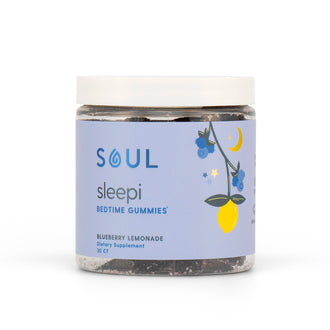Cannabis, with its rich history and complex legal standing, has become a central topic in global wellness and medical debates. A notable advancement in this area is the development of hybrid cannabis strains, combining the premier attributes of their parent strains to cater to the changing desires and needs of users. This article will explore the intricacies of hybrid cannabis, from its development to its properties and the nuanced effects it provides. We will examine the sophistication of hybrid cannabis, a key element in contemporary cannabis culture, offering a tailored experience for individuals pursuing personalized wellness solutions.
Understanding Cannabis Strains
The Fundamentals Of Indica Strains
Indica strains, originating from the Hindu Kush region near Afghanistan, are typically associated with a body-centric high. These strains are known for their relaxing and sedating effects, making them ideal for evening or nighttime use. They are often sought after for stress relief, to aid sleep, or to help reduce physical pain. Indica plants are generally shorter and bushier than their Sativa counterparts, with wider leaves.
The Energizing Effects Of Sativa Strains
In contrast, Sativa strains are known for their invigorating and uplifting cerebral effects. Originating from equatorial regions like Thailand, Mexico, and Colombia, these strains encourage creativity, increase energy, and can improve mood, making them suitable for daytime use. Sativa plants are taller and thinner than Indica plants, with narrower leaves.
Bridging The Gap With Hybrid Strains
Hybrid strains are a blend of Indica and Sativa genetics, created to offer a balanced mix of effects that cater to a wider array of needs and preferences. These strains can vary significantly in their balance of Indica and Sativa, leading to a wide spectrum of effects and uses. Hybrids are a testament to the versatility of cannabis and demonstrate the plant's potential to be tailored to individual experiences and medical needs.
Understanding Strains For Informed Choices
The distinction between Indica and Sativa strains, while useful, is just the beginning. The real journey begins with understanding the unique properties of each strain, including hybrids, to make informed choices about their use. Whether for medicinal or recreational purposes, the knowledge of cannabis strains is vital for achieving the desired outcomes.
The Birth Of Hybrid Cannabis
Origins And Evolution
The concept of hybrid cannabis is not new. It has evolved from decades of crossbreeding and experimentation within the cannabis cultivation community. By combining different strains of cannabis, breeders aimed to produce plants that embodied the best characteristics of both Indica and Sativa varieties. This crossbreeding led to the emergence of strains that could thrive in various climates and offer a range of effects and flavors, far beyond what was possible with pure Indica or Sativa strains.
The Science Of Hybridization
Hybridization in cannabis involves breeding two genetically different plants to create a new strain with unique traits. This can produce hybrids leaning towards Indica or Sativa, or balanced hybrids. The aim is to combine desirable features like high THC or CBD levels, strong growth patterns, and particular flavors.
The Rise Of Designer Strains
As cannabis laws and cultural attitudes changed, breeding techniques became more sophisticated, leading to "designer" hybrid strains. These are crafted to elicit specific effects like increased euphoria, relaxation, or pain relief, offering consumers and patients more controlled and customizable experiences.
Implications For Consumers And Medicine
The development of hybrid cannabis has had significant implications for both recreational users and medical patients. It has enabled a more nuanced approach to treatment, allowing individuals to select strains that best meet their specific needs. For recreational consumers, it means a richer diversity of experiences and choices. For medical patients, it represents the potential for more effective and personalized treatment options.
Characteristics Of Hybrid Strains
Balanced Effects
Hybrid cannabis strains are appealing for their balanced effects, combining Indica's relaxation with Sativa's energy. This creates a nuanced experience, ideal for users who find pure strains too intense or one-dimensional.

Diverse Flavors And Aromas
A wide range of flavors and aromas distinguish hybrid strains, resulting from the combination of different parent strain genetics. Users can explore a spectrum from sweet and fruity to earthy and skunky, allowing them to discover preferences that suit their individual tastes.
Varied Medical Benefits
Hybrids inherit the medicinal properties of their parent strains, making them versatile tools in treating various conditions. Depending on the genetic makeup, a hybrid strain might be used to alleviate chronic pain, anxiety, depression, insomnia, or other health issues. This makes hybrids particularly valuable in the field of medical cannabis, where patients can choose a strain that targets their specific symptoms.
Customizable Experiences
The greatest advantage of hybrid strains may be their customizability. With such a broad range of effects, flavors, and medical uses, users can select a hybrid that closely matches their desired experience or therapeutic needs. Whether seeking relaxation without sedation, energy without anxiety, or pain relief without intoxication, there is likely a hybrid strain that fits the bill.
Exploring The Diversity Of Hybrid Weed
Spectrum Of Hybrid Strains
The hybrid cannabis spectrum ranges from Indica-dominant to Sativa-dominant, catering to various preferences and needs. Indica-dominant hybrids typically provide bodily relaxation and pain relief with some uplifting effects, whereas Sativa-dominant hybrids tend to stimulate creativity and energy while offering some Indica-like calming effects.
Understanding Hybrid Categories
Hybrids are commonly categorized based on their Indica-to-Sativa ratio. This can be represented as a percentage, giving consumers an idea of what to expect from the strain’s effects. Additionally, hybrids are often described based on their dominant effects: “Indica-leaning,” “Sativa-leaning,” or “balanced.” This categorization helps users navigate the vast array of options and select a strain that aligns with their desired experience.
The Role Of Terpenes
The diversity of hybrid cannabis extends beyond Indica and Sativa genetics to include terpenes, aromatic compounds that define a strain's flavor, aroma, and possibly effects. Terpenes can influence whether a strain relaxes or energizes the user, adding to each hybrid's complexity and uniqueness.
Choosing The Right Hybrid For Your Needs
Identifying Your Goals And Preferences
Choosing the right hybrid strain starts with defining your goals: relief from conditions like anxiety or pain, mood uplift, creativity boost, or balanced relaxation. Knowing your personal preferences is essential for selecting a strain that meets your needs.
Consulting With Professionals
If available, consult with a cannabis dispensary or an informed healthcare provider. They can provide insights based on your medical history, tolerance, and desired outcomes, helping you navigate the options and find a strain that fits your health goals and lifestyle.

Starting Low And Going Slow
For new users of hybrid cannabis, follow the mantra "start low and go slow." Begin with a low to moderate THC strain to assess your body's response. Based on initial reactions, you can later adjust the potency and balance of Indica and Sativa effects.
Evaluating Your Experience
After trying a new hybrid strain, take the time to evaluate its effects. Consider whether it met your expectations in terms of physical sensations, mental state, and overall well-being. This reflective practice can help you refine your preferences and make more informed choices in the future.
Embracing Experimentation
Be open to experimentation with the variety of hybrid cannabis strains available, understanding that what suits one individual may not suit another, and personal preferences can change. Welcoming this process of discovery can enhance your cannabis experience, making it more rewarding and suitable to your needs.
Frequently Asked Questions
What are the origins of hybrid cannabis strains?
Hybrid cannabis strains originated from decades of crossbreeding different Indica and Sativa strains. This was done to combine the best characteristics of both types and produce strains that could adapt to various climates while offering diverse effects and flavors.
How are hybrid cannabis strains created?
Hybrid strains are created through the process of hybridization, where two genetically different cannabis plants, typically Indica and Sativa, are bred together. This results in new strains with unique traits, such as specific THC or CBD levels, growth patterns, or flavors.
What distinguishes hybrid cannabis strains from pure Indicas or Sativas?
Hybrid strains offer a balanced mix of effects, incorporating both the relaxing aspects of Indicas and the energizing properties of Sativas. They also come in a variety of flavors and aromas, providing a more nuanced experience compared to pure strains.
Why might someone choose a hybrid strain over a pure strain?
Individuals might choose hybrid strains for their balanced effects, customizable experiences, and diverse medical benefits. Hybrids can cater to specific needs and preferences, offering relaxation without full sedation, or energy without overwhelming anxiety.
Can hybrid cannabis strains be used medically?
Yes, hybrid strains can be used for various medical purposes. They inherit medicinal properties from their parent strains, making them versatile in treating conditions like chronic pain, anxiety, depression, or insomnia.
How can one choose the right hybrid cannabis strain?
Choosing the right strain involves understanding your goals and preferences, consulting with professionals if possible, starting with low THC content, and evaluating the strain's effects on your body and well-being.
What is meant by "Indica-dominant" or "Sativa-dominant" hybrid?
These terms refer to hybrid strains that lean more towards the effects of either Indica or Sativa. Indica-dominant hybrids generally offer more relaxation, while Sativa-dominant hybrids tend to be more energizing.
What role do terpenes play in hybrid cannabis strains?
Terpenes are aromatic compounds that contribute to a strain's flavor, aroma, and potentially its effects. They can influence whether a strain provides relaxing or energizing effects, adding to the hybrid's uniqueness.
Is it recommended to experiment with different hybrid strains?
Yes, experimenting with different hybrids can help individuals find the best match for their needs and preferences, as the effects can vary widely from person to person.
How should new users approach trying hybrid cannabis?
New users should adopt the approach "start low and go slow," beginning with strains that have a low to moderate THC level to gauge their body's response before trying higher potency or different balances of effects.
Sources:
- Lee, S., Kim, E. J., Kwon, E., Oh, S. J., Cho, M., Kim, C. M., Lee, W., & Hong, J. (2023). Identification of Terpene Compositions in the Leaves and Inflorescences of Hybrid Cannabis Species Using Headspace-Gas Chromatography/Mass Spectrometry. Molecules, 28(24), 8082. https://doi.org/10.3390/molecules28248082
- National Academies of Sciences, Engineering, and Medicine. (2017, January 12). Therapeutic Effects of Cannabis and Cannabinoids. Nih.gov; National Academies Press (US). https://www.ncbi.nlm.nih.gov/books/NBK425767/
- Sholler, D. J., Moran, M. B., Dolan, S. B., Borodovsky, J. T., Alonso, F., Vandrey, R., & Spindle, T. R. (2021). Use patterns, beliefs, experiences, and behavioral economic demand of indica and sativa cannabis: A cross-sectional survey of cannabis users. Experimental and Clinical Psychopharmacology. https://doi.org/10.1037/pha0000462
- Zeng, L., Lytvyn, L., Wang, X., Kithulegoda, N., Agterberg, S., Shergill, Y., Esfahani, M. A., Heen, A. F., Agoritsas, T., Guyatt, G. H., & Busse, J. W. (2021). Values and preferences towards medical cannabis among people living with chronic pain: a mixed-methods systematic review. BMJ Open, 11(9), e050831. https://doi.org/10.1136/bmjopen-2021-050831
- Boehnke, K. F., Yakas, L., Scott, J. R., DeJonckheere, M., Litinas, E., Sisley, S., Clauw, D. J., Williams, D. A., & McAfee, J. (2022). A mixed methods analysis of cannabis use routines for chronic pain management. Journal of Cannabis Research, 4(1). https://doi.org/10.1186/s42238-021-00116-7




